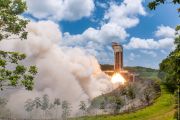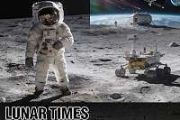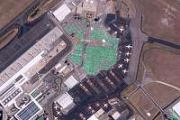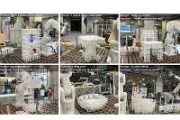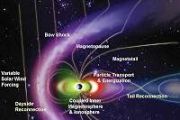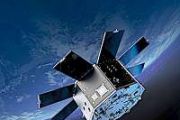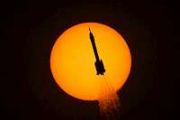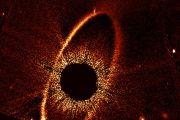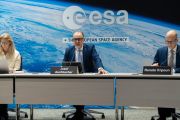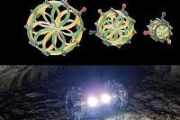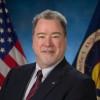
OFFLINE
Frank Monahan
0
1578
Account Details
Frank
Monahan
Frank Monahan
Frank Monahan
Yes
Yes
-
Profile Overview
NASA - Johnson Space Center
Branch Chief
Management
Chief, Engineering-Flight Mechanics and Trajectory Design Branch
Astronomy, Music, Cooking, Fine Dining
No
26 Jun 1959
Male
Graduated with BS from Boston University in Aerospace Engineering and began career with Rockwell international in 1980 working on Space Shuttle Ascent Trajectory Design. I received my MS in Aerospace Engineering (Orbital Mechanics) from the University of Southern California in 1988. During my time at Rockwell, I developed the techniques of determining ascent performance of the SSME's, SRB's and the methodologies of Ascent Performance Reconstruction that became standard for the Space Shuttle Program. I became an employee of JSC in 1989 and was the lead of Space Shuttle Ascent Reconstruction for the Space Shuttle Program. In 1993, I became the Chairman of the International Space Station Interface Control Working Group (ICWG) which was responsible for developing the IRDs and ICDs for all the International Partner elements that interfaced with the USOS portion of the ISS. I was a member of the Flight Performance Systems Integration Group (FPSIG) for the Constellation Program, and eventually became the lead of the FPSIG until the program was cancelled. I became the deputy of the Flight Mechanics and Trajectory Design branch of JSC Engineering. I am now currently Branch Chief.
Capabilities
National Aeronautics and Space Administration
01 Jan 2017
-
26 Apr 2021
Engineering Branch Chief - Flight Mechanics and Trajectory Design
Branch Chief and responsible design engineer for new development of trajectories and algorithms related to Ascent, On-orbit, and Entry, Descent and Landing . Serves as an expert authority, directing and conducting a broad range of inter-disciplinary studies including flight envelopes for all flight phases, integrated design reference missions, vehicle capability evaluations, planetary GN&C architecture requirements, preliminary GN&C algorithms and optimization. Conducts aerospace mission analyses and configuration studies to assess mission feasibility and configuration optimization and vehicle performance. Conducts experiments and fundamental studies on new techniques and methods of analysis for the performance of aerospace vehicles and subsystems. Affects the work of other experts and the development of major parts of projects. Makes recommendations and implements actions involving highly complex technical problems, including those that apply to controversial or unusual integrated systems in areas such as fluid and flight mechanics. Defines unknown conditions, resolves critical design problems, or develops new design theories. Determines major tests or studies should be stopped or major alterations made due to changes in programs. Manage, plan, and conduct analysis studies defining flight performance envelopes, trajectory designs, and flight phase/systems compatibility assessments. -Define, develop and implement specific math models and computer logic formulation associated with vehicle trajectory, guidance, control, and navigation simulations. Design and develop conceptual algorithms supporting spacecraft performance and dispersion studies. Direct contractor and junior civil service personnel in program simulation development and systems engineering and performance analysis. Define jobs, select employees, and assign work; define technical work requirements and milestones; evaluate the organization and employee accomplishments by accepting or rejecting work products; and present and defend organization and employees work to senior management and other offices. Recommend employee promotions and recognition; approve leave; implements performance modifications and takes corrective actions as appropriate.
National Aeronautics and Space Administration
01 Jan 2011
-
31 Dec 2016
Engineering Deputy Branch Chief - Flight Mechanics and Trajectory Design
Deputy Branch Chief and responsible design engineer for new development trajectories and algorithms related to Ascent, On-orbit, and Entry . Serves as an expert authority, directing and conducting a broad range of inter-disciplinary studies including flight envelopes for all flight phases, integrated design reference missions, vehicle capability evaluations, planetary GN&C architecture requirements, preliminary GN&C algorithms and optimization. Conducts aerospace mission analyses and configuration studies to assess mission feasibility and configuration optimization and vehicle performance. Conducts experiments and fundamental studies on new techniques and methods of analysis for the performance of aerospace vehicles and subsystems. Affects the work of other experts and the development of major parts of projects. Makes recommendations and implements actions involving highly complex technical problems, including those that apply to controversial or unusual integrated systems in areas such as fluid and flight mechanics. Defines unknown conditions, resolves critical design problems, or develops new design theories. Determines major tests or studies should be stopped or major alterations made due to changes in programs. Manage, plan, and conduct analysis studies defining flight performance envelopes, trajectory designs, and flight phase/systems compatibility assessments. -Define, develop and implement specific math models and computer logic formulation associated with vehicle trajectory, guidance, control, and navigation simulations. Design and develop conceptual algorithms supporting spacecraft performance and dispersion studies. Direct contractor and junior civil service personnel in program simulation development and systems engineering and performance analysis. Define jobs, select employees, and assign work; define technical work requirements and milestones; evaluate the organization and employee accomplishments by accepting or rejecting work products; and present and defend organization and employees work to senior management and other offices. Recommend employee promotions and recognition; approve leave; implements performance modifications and takes corrective actions as appropriate.
Boston University
1976
-
1980
BS Aerospace Engineering
Bachelor's program for Aerospace Engineering degree
University of Southern California
1985
-
1988
MS Astronautical Engineering
Master's Program focusing on Orbital Mechanics and Astrodynamics
-
This gallery is currently empty.
Statistics
0
0
26 Apr 2021
12 Jul 2021
26 Apr 2021








